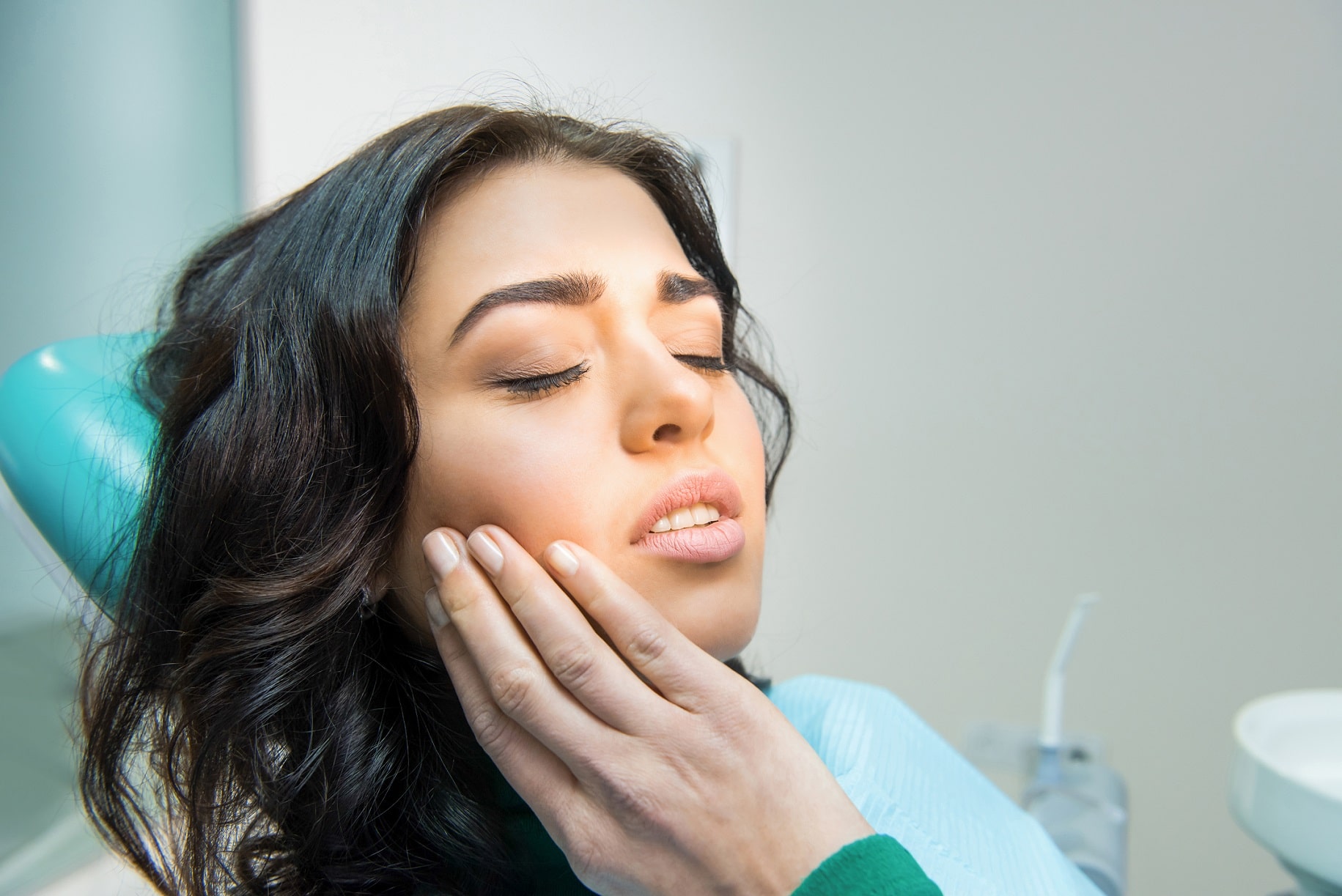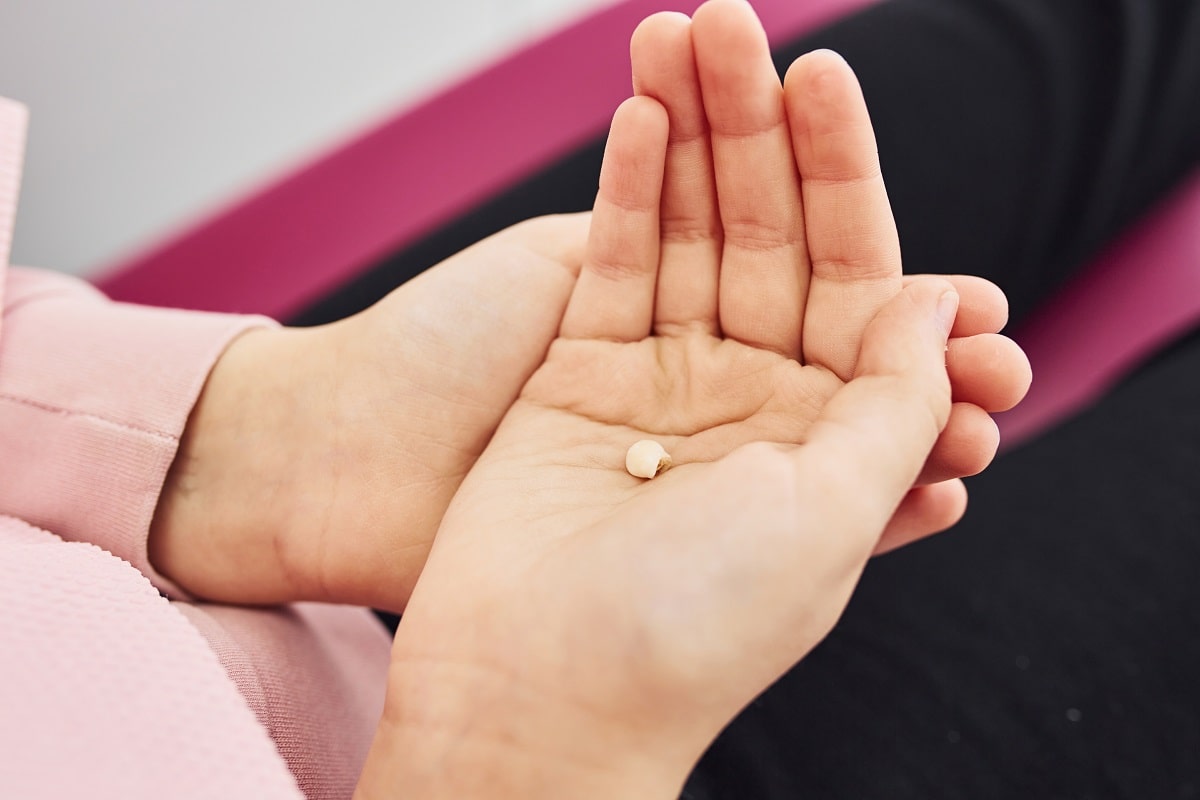More than five million teeth are knocked out every year in children and adults but if this happens to you due to an injury or accident it doesn’t necessarily mean it’s lost for good. Proper emergency action can save the tooth so that it can be replanted successfully and last for years to come. Bring the tooth with you to your emergency appointment ideally. It’s best to see the doctor within 30 minutes; however, it is possible to save a tooth even if it has been outside the mouth for an hour or more.

Dislodged Teeth
Injuries to the mouth can cause teeth to be pushed back into their sockets. Your endodontist or general dentist may reposition and stabilize your tooth. Root canal treatment is usually started within a few weeks of the injury and a medication, such as calcium hydroxide, will be placed inside the tooth. Eventually, a permanent root canal filling will be implanted.
Sometimes a tooth may be pushed partially out of the socket. Again, your endodontist or general dentist may reposition and stabilize your tooth. If the pulp remains healthy, then no other treatment is necessary. Yet, if the pulp becomes damaged or infected, root canal treatment will be required. If left untreated, many different complications can arise. These complications can include but are not limited to: Infection of the tooth, root system or surrounding tissue, inadequate hygiene due to an inability to properly clean the dislodged tooth and the gums, and loss of the tooth.

Dislodged Teeth
Injuries to the mouth can cause teeth to be pushed back into their sockets. Your endodontist or general dentist may reposition and stabilize your tooth. Root canal treatment is usually started within a few weeks of the injury and a medication, such as calcium hydroxide, will be placed inside the tooth. Eventually, a permanent root canal filling will be implanted.
Sometimes a tooth may be pushed partially out of the socket. Again, your endodontist or general dentist may reposition and stabilize your tooth. If the pulp remains healthy, then no other treatment is necessary. Yet, if the pulp becomes damaged or infected, root canal treatment will be required. If left untreated, many different complications can arise. These complications can include but are not limited to: Infection of the tooth, root system or surrounding tissue, inadequate hygiene due to an inability to properly clean the dislodged tooth and the gums, and loss of the tooth.
Avulsed Teeth
If an injury causes a tooth to be completely knocked out of your mouth, it is important that you are treated immediately! If this happens to you, keep the tooth moist. If possible, put it back into the socket. A tooth can be saved if it remains moist. You can even put the tooth in milk or a glass of water (add a pinch of salt.) Your Endodontist may start root canal treatment based upon the stage of root development. The length of time the tooth was out of your mouth and the way the tooth was stored, may influence the type of treatment you receive.




Avulsed Teeth
If an injury causes a tooth to be completely knocked out of your mouth, it is important that you are treated immediately! If this happens to you, keep the tooth moist. If possible, put it back into the socket. A tooth can be saved if it remains moist. You can even put the tooth in milk or a glass of water (add a pinch of salt.) Your Endodontist may start root canal treatment based upon the stage of root development. The length of time the tooth was out of your mouth and the way the tooth was stored, may influence the type of treatment you receive.



Injuries In Children
An injured immature tooth may need one of the following procedures to improve the chances of saving the tooth:
Apexogenesis
This procedure encourages the root to continue development as the pulp is healed. Soft tissue is covered with medication to encourage growth. The tip of the root (apex) will continue to close as the child gets older. In turn, the walls of the root canal will thicken. If the pulp heals, no additional treatment will be necessary. The more mature the root becomes, the better the chance to save the tooth.
Apexification
In this case, the unhealthy pulp is removed. The doctors place medication into the root to help a hard tissue form near the root tip. This hardened tissue provides a barrier for the root canal filling. At this point, the root canal walls will not continue to develop, making the tooth susceptible to fractures. So it is extremely important to have the tooth properly restored by your dentist.



Injuries In Children
An injured immature tooth may need one of the following procedures to improve the chances of saving the tooth:
Apexogenesis
This procedure encourages the root to continue development as the pulp is healed. Soft tissue is covered with medication to encourage growth. The tip of the root (apex) will continue to close as the child gets older. In turn, the walls of the root canal will thicken. If the pulp heals, no additional treatment will be necessary. The more mature the root becomes, the better the chance to save the tooth.
Apexification
In this case, the unhealthy pulp is removed. The doctors place medication into the root to help a hard tissue form near the root tip. This hardened tissue provides a barrier for the root canal filling. At this point, the root canal walls will not continue to develop, making the tooth susceptible to fractures. So it is extremely important to have the tooth properly restored by your dentist.
Have Traumatic Injuries Questions?
Notably, there are three main classifications of dental injuries that are used to determine the severity of the injuries. The first classification is injuries to hard dental tissues and pulp. They include; enamel-dentin fracture, enamel fracture, and complicated crown fracture.
The second classification is injuries to the hardened dental tissues of the alveolar process and the pulp. They include; root fracture, crown-root fracture, and alveolar fracture.
The third classification is periodontal tissue injuries. These include; subluxation, concussion, and luxation injuries which are avulsion, extrusive luxation, intrusive luxation, and lateral luxation.
Usually, after a tooth extraction a blood clot forms. The blood clot helps to protect the bone during the healing process. However, at times the blood clot can become loose and come out of the tooth socket resulting in a dry socket that exposes the bone.
There several ways in which you can tell that a blood clot has dislodged from the wisdom teeth. These include;
· Spiteful taste in the mouth
· Acute pain several days after tooth extraction
· A foul odor and bad breath from your mouth
· Total or partial loss of the blood clot immediately after tooth extraction in which one may notice as an empty-looking socket
· Pain that emits from the socket to the eye, ear, neck, or temple on the same side of the face as the extraction
· Visible bone in the socket
The choice of a storage media should be determined by the viability to promote the growth of periodontal fiber cells present in the root surface of an avulsed tooth and its availability. The teeth can be placed in the saliva of the victim, saline or milk: In the saline solution, rinse well to ensure the fiber and cell in the surface of the root are well protected, this will ease implanting of the tooth.
Milk which is chilled and has lower fat content is considered the best storage medium for an avulsed tooth this is due to its availability, affordability, and its ability to promote the growth of periodontal fiber which is vital in the implanting of the avulsed tooth.
Treatment of an avulsed tooth is influenced by the extent of damage of periodontal ligaments, storage conditions, and duration before replantation. To promote progressive healing replace the teeth 15 minutes after the accident. Additionally, store it in an appropriate medium to promote the healing of PDL cells to affirm the tooth in the alveolar bone firmly.
The specification is a method whereby a calcified barrier in a root with an open apex or the continued apical development of an incomplete root in the teeth with necrotic pulps.
Apex genesis is a therapy procedure performed to encourage physiological development and formation of the root end.
